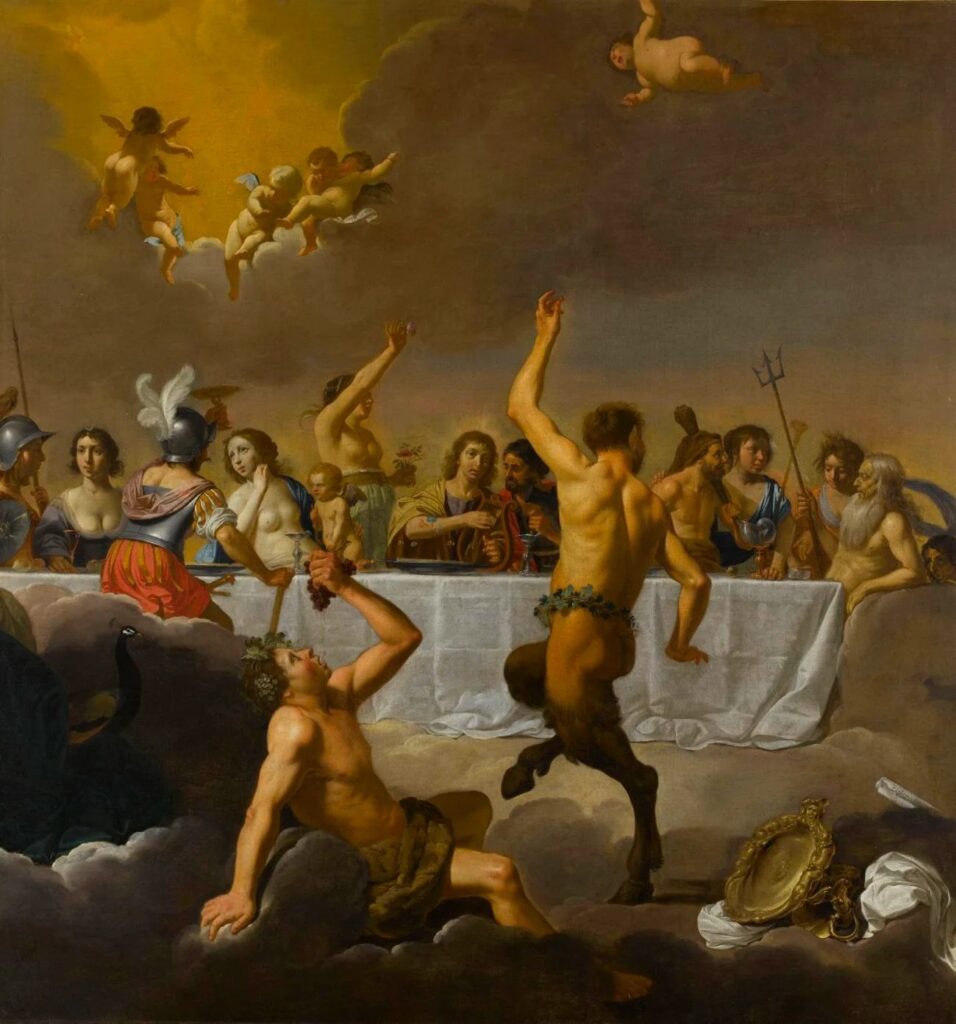Following the controversy caused by one of the scenes of the opening ceremony of the Olympics, many wise men, including commentators on our televisions such as Ana Gomes, criticized the reaction of the Catholics who became outraged. So don’t these Catholics know that this scene was an adaptation of a painting by a Dutch painter on the theme “The Feast of the Gods” and that it had nothing to do with Leonardo da Vinci’s “Last Supper”?? Well, I did a little research that I’m now sharing with you with the respective images.
Frame 1 – Leonardo da Vinci paints fresco in Milan “The Last Supper” (1495). Over time this image becomes an icon of this formative episode of Christianity. According to the Gospel, the Eucharist was established by Christ at that moment, which Catholics always celebrate on Holy Thursday.

Frame 2 – Raphael, in 1515, uses the same involvement to paint the feast of the gods, in a period when Leonardo’s work had not yet gained fame. We are at the height of the Renaissance, in the same intellectual environment that will still be used, for example, by Camós in “The Lusíadas” and the Church is thirsty for reform.

But this reform, triggered by Luther from 1517, will bring more than the reform of the institutions, which almost everyone wanted. Luther denies most of the sacraments, including the Eucharist and the mystery of the substance.
Certainly for this reason, the artists who have continued to paint the Feast of the Gods have put it in a garden before, separating the Greco-Roman tradition from the new controversies aroused by the Reformation. The memory of the Last Supper has since taken on a new meaning and has been preserved.
Frame 3 – The feast of the gods by Titian (1490-1576) (initiated by Bellini (1436-1516), but finished by Titian who painted precisely the surrounding)

Frame 4 – The Feast of the Gods by Rubens (1577-1640)

Frame 5 – The feast of the gods attributed to Jan van Balen and Hendrik van Kessel, residents in Catholic Antwerp in the mid 17th century

Other similar subjects, such as the Triumph of Baco by Velasquez (1629) were also painted in the surroundings of a garden.
Our nice and innocent Games organizers are unaware of this whole Catholic or pure tradition and just ignored it. Rubens? Titian ? pfff
Meanwhile, in 1635, Jan Harmensz van Bijlert, Dutch Calvinist established in Utrecht, who visited Italy and was influenced by Caravaggio, decided to also paint the feast of the gods, but unlike what his Catholic colleagues from Antwerp did, he decided to repaint the feast around a table, to the iconic last supper mode

In a nutshell:
Bijlert’s painting is not “the” original depiction of the Feast of the Gods, which was painted in full counter-reformation by Catholics in another frame.
The picture of Bijlert, produced in the midst of the Thirty Years’ War, when Catholics and Protestants fought cruelly on battlefields and disputed theological issues in the pulpits and in books, must be understood in a framework of confrontation against the Catholic world. Bijlert, who traveled through Italy, knew what he was doing.
The nice organizers of the Games maybe you don’t know this little story that I have lined up for you here, but their ignorance does not make them innocent. TV commentators are, in fact, in the vast majority, innocent ignorant.
